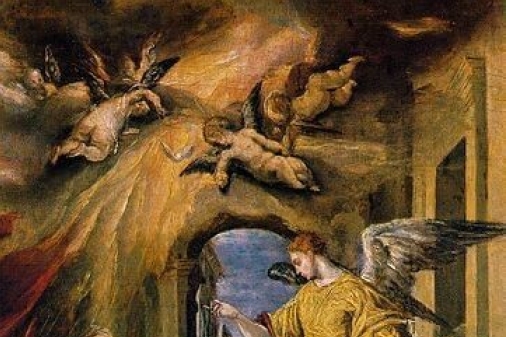
The Annunciation holds a profound place in Christian theology, marking the moment when the angel Gabriel visited the Virgin Mary with a message of immense significance: the conception of Jesus, the Son of God. This sacred event, observed on 25 March, carries fundamental theological and spiritual importance within the Christian calendar, signifying the onset of the Incarnation - the belief that God became human in the person of Jesus Christ.
In the Gospel of Luke, Chapter 1, verses 26-38, the narrative of the Annunciation unfolds:
"In the sixth month of Elizabeth's pregnancy, God sent the angel Gabriel to Nazareth, a town in Galilee, to a virgin pledged to be married to a man named Joseph, a descendant of David. The virgin's name was Mary. The angel went to her and said, 'Greetings, you who are highly favoured! The Lord is with you.'"
These words of the angel Gabriel to Mary denote the divine favour bestowed upon her and the extraordinary role she would play in God's plan for humanity. Mary's initial response reflects her humility and willingness to serve: "'I am the Lord's servant,' Mary answered. 'May your word to me be fulfilled.'"
The Annunciation signifies the moment when the Word became flesh, as described in John 1:14, "The Word became flesh and made his dwelling among us. We have seen his glory, the glory of the one and only Son, who came from the Father, full of grace and truth."
Mary's acceptance of Gabriel's message exemplifies her unwavering faith and obedience to God's will, despite the potential challenges and uncertainties she faced. Her pivotal role as the mother of Jesus highlights the profound partnership between humanity and divinity in the unfolding of God's redemptive plan.
The significance of the Annunciation extends beyond its historical context, resonating throughout Christian theology and spirituality. It symbolises the hope of salvation for humanity, as God enters into human history to reconcile humanity to Himself.
The early Church Fathers often referred to Mary as the "New Eve", drawing parallels between her obedience and the disobedience of Eve, whose actions in the Garden of Eden led to humanity's fall. Mary's fiat, or "let it be done", stands in stark contrast to Eve's disobedience, underscoring her pivotal role in the reversal of humanity's spiritual condition.
Throughout Christian history, the Annunciation has been celebrated through liturgical feasts, artistic representations, and devotional practices. In Christian art, the Annunciation is depicted with symbols such as the angel Gabriel, the Virgin Mary, and the Holy Spirit represented as a dove, encapsulating the mystery and beauty of this divine encounter.
As Christians reflect on the Annunciation, they are invited to contemplate the vastness of God's love and mercy, manifested in the person of Jesus Christ. It serves as a reminder of God's faithfulness to His promises and His invitation for humanity to participate in His redemptive work. Consequently, it holds a moment of profound significance, where the divine intersects with the mortal realm.
For believers, the Annunciation stands as a cornerstone of Christian faith, representing the convergence of divine grace and human obedience. Through Mary's "yes" to God's plan, humanity receives the gift of salvation and the hope of eternal life.
As Christians commemorate the Annunciation on 25 March, they are called to emulate Mary's faith and trust in God's providence, embracing His will with humility and joy.









